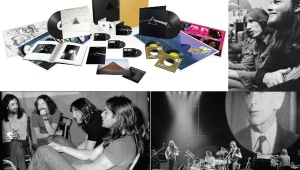Moving Pictures: Rush's 1981 Masterpiece Gets its Due in Atmos
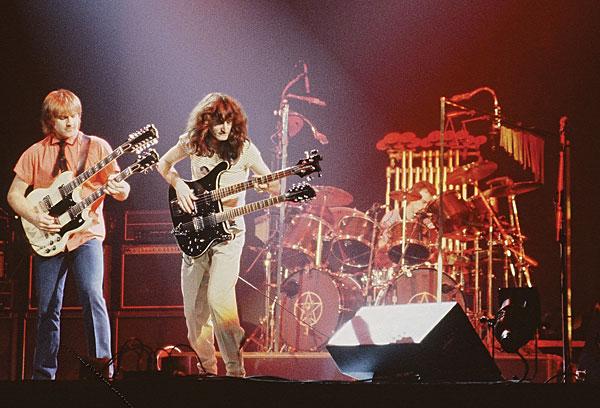
During this particular call, Lifeson is visibly perched in front of an impressive studio wall populated by row after endless row filled with gear. Naturally, I can't help but inquire about one particular guitar I spy that I'm 99.99 percent sure was responsible for one of the most moving sound sequences in the entirety of Rush's recorded C.V., a vaunted canon that spans almost five full decades.
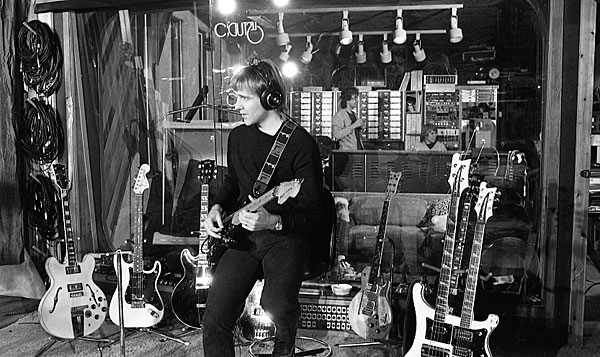
“Yeah, that's my Hentor, the guitar I used for the solo on 'Limelight,'” Lifeson clarifies with a nod and a grin, referring to the cheekily renamed hybrid Fender Stratocaster outfitted with a Floyd Rose vibrato arm. Said Hentor is indeed the guitar that supplied the thoughtful, elegiac solo in “Limelight,” one of Rush's signature songs that Lifeson has told me on more than one occasion, “remains my favorite of all the guitar solos I've ever done.”
And that's the power of popular music right there, boiled down to a few sentences. Just by Lifeson's namechecking the 1981 song title “Limelight,” many of us instantly conjure the vibe, tone, and feelings the song and its subject matter elicit, most especially the character of his emotive, note-sustained, and expertly restrained guitar solo.
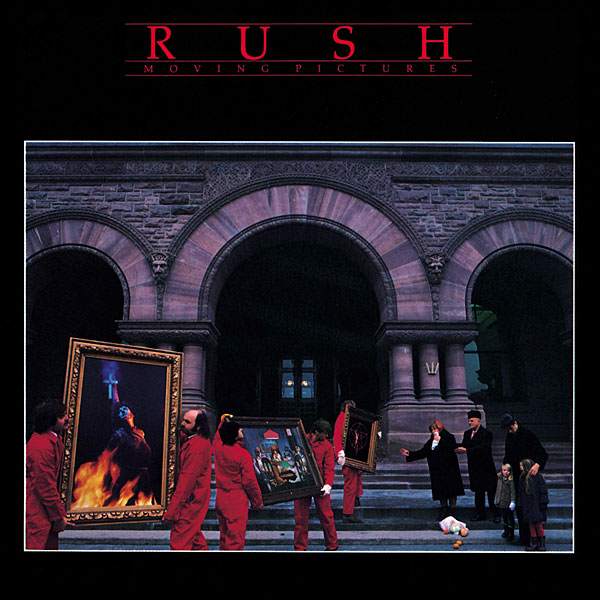
“Limelight” is but one of the seven instantly identifiable and equally individual songs comprising the 40 seamless minutes found within the grooves of Rush's eighth studio effort, February 1981's landmark Moving Pictures. This five-times-platinum, norm-elevating album catapulted Rush from a cult-favorite concert draw with a number of FM radio hits to their credit into a certified household-name headlining act henceforth able to chart their own course for the remainder of their career. The combined axis of bassist/vocalist/keyboardist Geddy Lee, guitarist Alex Lifeson, and drummer/lyricist Neil Peart carried the torch for bringing complex, time-signature-shifting music to the masses for over 40-plus years — an impressive sonic book officially closed for good following their final, 35-date R40 Live Tour in 2015. With Peart's passing in January 2020 following a long, private battle with Glioblastoma (a form of brain cancer), Rush as a performing entity was officially forever positioned in the rearview mirror.
In the ensuing years following that final R40 concert run, Rush's recorded legacy has been regularly feted via elaborately constructed box sets from UMe. Similar to the breadth of the expanded editions chronicling the scope of four of their previous studio albums, the aforementioned Moving Pictures has just received its own wholly deserved 40th anniversary super-deluxe treatment — albeit seeing release here in Year 41 due to those dreaded supply-chain delays. It's been worth the wait, however. Moving Pictures Mach 40 is now commemorated in six distinct configurations: the mondo 3CD/1BD/5LP Super Deluxe Edition, 3CD Deluxe Edition, 5LP Deluxe Edition, and 1LP Edition, plus a pair of digital offerings — the Digital Deluxe Edition and a standalone Dolby Atmos Digital Edition.
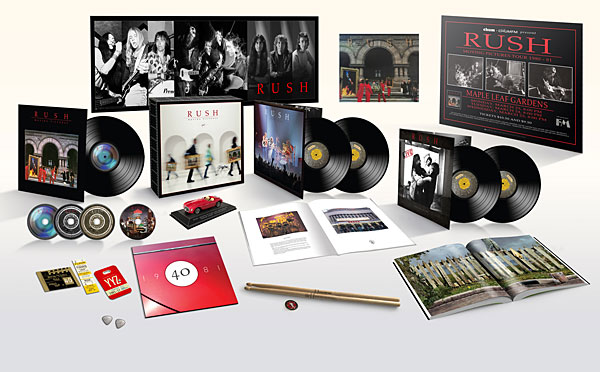
Hardcore Rush fans like yours truly will obtain all versions both physical and digital for, er, collecting purposes, but the linchpin acquisition is clearly the Super Deluxe Edition. This collection includes the Abbey Road Mastering Studios 2015 remastered edition of the album on Disc 1 — duly making its first appearance on CD — along with two discs of previously unreleased and newly restored bonus live content newly mixed from the original analog live multitracks by Moving Pictures' original producer, Terry Brown. Discs 2 and 3 feature the complete, unreleased Rush concert at Maple Leaf Gardens in Toronto, Ontario on March 25, 1981, designated here as Live in YYZ 1981. (It's a much more fully realized complement to October 1981's Exit. . . Stage Left, a 2LP set that culled its tracks from the band's appearances at The Apollo in Glasgow, Scotland on June 10-11, 1980, and The Forum in Montreal, Quebec on March 27, 1981.)
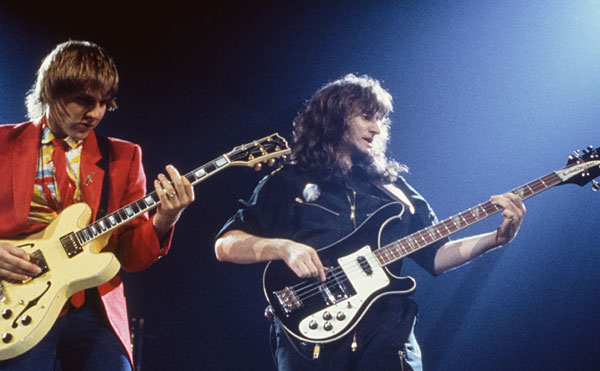
The fourth disc is the kicker, a Blu-ray featuring the core album newly mixed from the original multitracks in 24-bit48kHz Dolby Atmos — a Rush catalog first— — as well as in 24/96 Dolby TrueHD 5.1 and 24/96 DTS-HD Master Audio 5.1 options. These superb surround mixes were all done by longtime Rush associate and noted producer/engineer Richard Chycki, and they reside here alongside the previously available 24/48 PCM Stereo mix. Also included on the Blu-ray are four bonus videos — a brand-new, red-hued animated clip for “YYZ” (with a surprise ending I won't spoil here), plus three remastered vintage performance-based promo videos for “Tom Sawyer,” “Limelight,” and “Vital Signs,” all of which were filmed during the album's recording sessions at Le Studio in Morin-Heights, Quebec.
The vinyl in the Super Deluxe Edition has been cut via half-speed Direct Metal Mastering on five 180-gram black LPs. Beyond all the aural goodies, we also get some exceedingly très-cool extras like liner notes from the likes of bass innovator Les Claypool and late Foo Fighters drummer Taylor Hawkins, as well as a mounted replica Red Barchetta model car and a pair of Neil Peart MP40 signature drumsticks. Visually speaking, there's a vibrant combination of thematically updated and all-new artwork elements courtesy the album's original art director, graphics designer, and cover concept innovator Hugh Syme, a man who's contributed his artistic talents to most every Rush release there is.
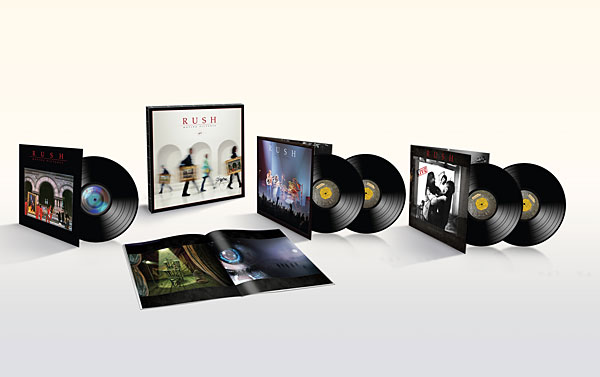
Fire Up The Willing Engine
Moving Pictures certainly wouldn't have developed as it did without the prior breakthroughs Rush achieved during the recording of January 1980's Permanent Waves within the friendly confines of Le Studio. “It's always been very important for us to evolve,” Lifeson believes, and so did his bandmates Lee and Peart.
Just as he had done for all seven of Rush's previous studio efforts, Terry Brown was back behind the boards as producer/arranger for the Moving Pictures sessions taking place during October and November 1980 at Le Studio, with his British counterpart Paul Northfield returning as engineer for a second time. “Paul did a great job engineering Moving Pictures,” assesses Brown. “He had a good handle on the room, and he was totally comfortable with the technical aspects of the studio, and of our sessions. We had a great working relationship.”
Northfield, who worked on a number of Rush's subsequent albums up through May 2002's Vapor Trails and also engineered records from the likes of Porcupine Tree, Queensrÿche, and Dream Theater, ultimately became a full-fledged producer for artists such as Suicidal Tendencies and Moist. Incidentally, if you look closely at some of the in-studio footage on display in the Bonus Videos section of the Blu-ray, you'll observe occasional shots taken of the backs of both Brown and Northfield working diligently next to each other at the main console in Le Studio. They're positioned behind the glass while all three members of Rush are seen playing together in the recording room clearly visible from that purview. Sadly, Le Studio no longer exists, after closing for good in 2003 and being razed to the ground in 2020.
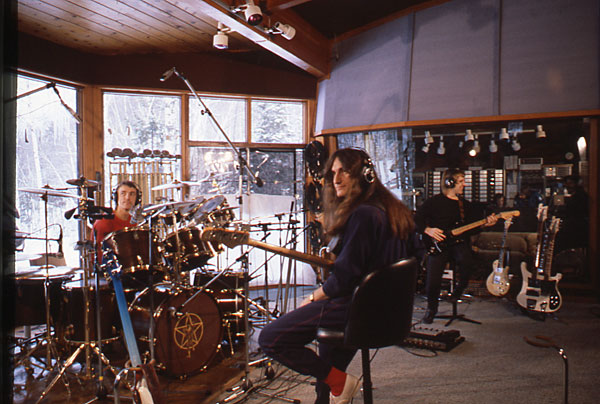
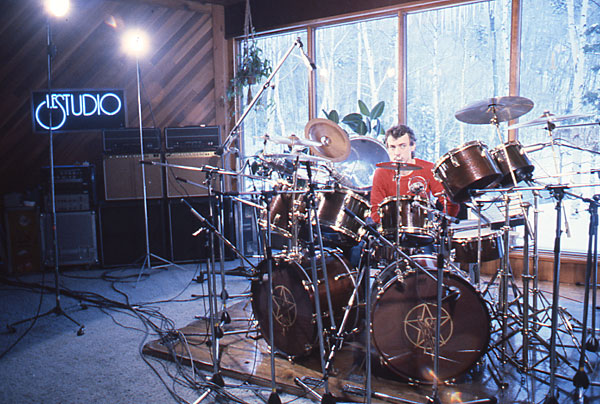
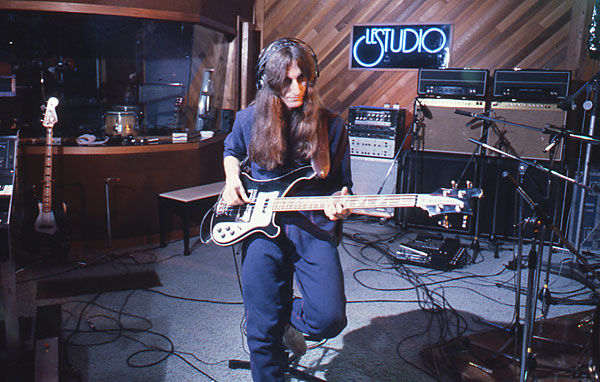
What was it that made the late, lamented Le Studio such an ideal locale for these sessions? “Le Studio was the perfect environment to record Moving Pictures, partly because we had such a wonderful experience there while recording Permanent Waves,” Brown reports, referring to the previous album's sessions that occurred there a year earlier in September and October 1979. “Let's not forget Le Studio was nestled in the Laurentian Mountains, was on a beautiful lake, had super accommodations, and the recording room had views over that lake,” Brown continues. “We set Neil up in front of the vast windows on Paul Northfield's recommendation, and the kit sounded wonderful — plus, the equipment in the control room was cutting-edge.”
Le Studio's recording equipment was critical for getting the sounds that made Moving Pictures such a benchmark album. “The main console was an SSL E series, which had been installed there since our last visit,” Brown details. “We used a small Neve sidecar [console] to record the kick, snare, and toms for Neil's kit while laying down the bed tracks. The Neve was also used to capture bass, guitar, and vocals when we were in overdub mode. A Studer 800 was the primary recorder, and we used an RCA BA6 vintage compressor on the bass DI to capture its personality. Of course, the biggest addition was the Sony 1610 digital system, coupled with a [Sony] U-matic ¾-inch video recorder used to archive my mixes. As I remember it, we loaded in on a Friday, and began setting up gear. During the evening, we sorted and fine-tuned Neil's drum sound. On Saturday, we started recording 'Tom Sawyer,' which undoubtedly was the tune that set the tone for the rest of the sessions.”
I asked Brown to give further context to the “arrangements by” credit he was often given on Rush albums like Moving Pictures. If you've ever wondered why the band has never — underscore never — released any demos, outtakes, or even one single solitary alternate take from any of their recording sessions, Brown's answer sheds light on some of the key reasoning behind that thought process. “Production in the studio is like direction on a movie set. It's up to the producer to call the perfect take and nurture the best performances from an artist,” he explains. “Arrangements are of huge importance in the way a song develops, not least of all from an emotional point of view for taking the listener on a journey. For instance, how long should the intro be? Are the verses to be strung together? Do we need a B verse, or a bridge? Is the solo engaging enough? Is the bass getting in the way of the vocals at certain points? These are some of the many elements that need to be addressed in an arrangement.” Such sound reasoning is why Rush songs are truly concise, whether they run for 4 minutes or 11 minutes. In essence, this “Goldilocks Approach” to recording is enacted so precisely on Moving Pictures — nothing is too long, and nothing is too short; all of it is just right.

